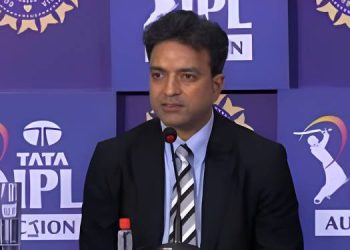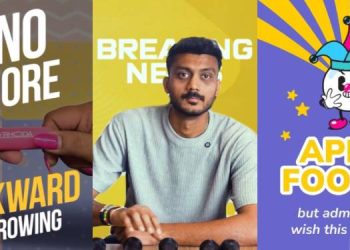In the early days of advertising, storytelling enjoyed the luxury of time. Television commercials spanned a full 60 seconds, allowing brands ample room to craft detailed, emotional narratives. However, with the advent of the hyper-commercialized digital era, time constraints have dramatically reduced. Today, brands often have mere seconds—particularly in high-profile events like the IPL—to deliver compelling stories.
During his session at AdTalk by the Madras Advertising Club, Senthil Kumar, Chief Creative Officer at VML India, shared insights on mastering split-second storytelling—the art of creating powerful brand narratives within extremely short timeframes. Kumar emphasized that despite the shrinking ad slots, the challenge remains the same: to evoke emotion and brand recall in just a few fleeting moments.
“In 10 seconds, you’ve got to tell your brand story. You’ve got to communicate a lot,” Kumar highlighted, demonstrating how creativity, combined with technology, can transform time-constrained ads into impactful experiences.
Nike: Pushing the Boundaries of Storytelling
Drawing from his decade-long experience working with Nike, Kumar detailed how the brand continually redefined creative benchmarks. From its early long-format commercials to its innovative 10-second campaigns, Nike embraced brevity without sacrificing emotional impact.
In 2012, Senthil’s team launched Parallel Journeys, a Cricket World Cup campaign depicting the simultaneous journeys of aspiring cricketers across India—from school grounds to professional leagues. The portrayal of cricket as a shared national passion became iconic, with the slogan “Bleed Blue” still trending during major cricket victories.
However, despite its success, the campaign faced criticism for resembling Nike’s previous global work. The feedback was clear: while effective, it lacked creative differentiation.
The Birth of a Groundbreaking Idea
In 2014, with the T20 World Cup approaching, Nike challenged Kumar’s team to develop an original concept with zero budget. With no access to professional cricketers due to conflicting brand deals, the team turned to “Cricket Crazy Youth” (CCY)—amateur players—to form the creative core. The breakthrough idea? Split-second storytelling through still images.
“How many frames are there in one second? 24. So, we thought, why not split one second into 24 frames and tell the story through stills instead of video?” Kumar explained.
This revolutionary concept led to a campaign featuring 1,440 still images—24 frames per second, across a 60-second spot. The team collaborated with 108 amateur photographers across India, capturing bowlers, batsmen, and fielders in action. The final result was a rapid-fire visual sequence of stills, simulating motion with a breathtaking, experimental style.
Crafting the Masterpiece
With no large-scale production budget, Senthil’s team relied on creative resourcefulness. The post-production process was particularly intensive:
-
Three months of editing: Thousands of stills were meticulously sifted, refined, and sequenced into the final cut.
-
Innovative distribution: The campaign leveraged social media by allowing viewers to tag themselves in individual frames on Instagram and Facebook, creating an interactive, shareable experience.
The campaign earned over 50 international awards, including 7 Cannes Lions, cementing Kumar’s reputation as a visionary director.
Blink and They’re Gone: Merging Storytelling with Technology
The Nike campaign’s success paved the way for new creative opportunities. One such project involved renowned British photographer Jimmy Nelson, famous for documenting endangered indigenous tribes. Inspired by Kumar’s work, Nelson invited him to collaborate on a film showcasing his life’s work.
The campaign, titled “Blink and They’re Gone”, employed beta facial recognition technology on Facebook. As viewers watched the film, the camera detected blinks. Each blink caused the film to momentarily pause, symbolizing the fleeting disappearance of endangered cultures.
“If you blink, they’re gone,” Kumar explained, symbolizing the delicate balance between preservation and loss.
This innovative interactive storytelling technique turned the campaign into an unforgettable experience, amplifying Nelson’s mission on a global scale.
Naaka Mukka: When an Ad Became a Cultural Anthem
What started as an ad film for The Times of India’s Tamil Nadu edition launch became a nationwide sensation. Naaka Mukka was more than just a song—it was a visual metaphor for the resilience and passion of Tamil Nadu. With its high-energy beats and symbolic storytelling, the film captured the spirit of the state, resonating beyond advertising. It soon became a Tamil anthem, heard in political rallies, festivals, and IPL matches. Winning two Cannes Lions, Naaka Mukka redefined how advertising could transcend branding to become pop culture, proving that a great story lives beyond its medium.
Tata Gluco Plus: 01-Second Loop GIFs That Redefined Advertising
In the fast-scrolling world of digital content, how do you capture attention in just a second? Senthil Kumar’s campaign for Tata Gluco Plus answered this with hyper-expressive, 01-second loop GIFs. Designed for mobile-first audiences, these bite-sized stories packed humor, action, and energy into an endless loop—ensuring instant brand recall. The campaign pioneered ultra-short storytelling, proving that even in one second, a brand could create engagement and impact. This innovative approach redefined thumb-stopping content, making advertising as quick and addictive as the digital world itself.
Innovative Techniques in Visual Storytelling
Kumar’s session also showcased cutting-edge techniques that redefined storytelling in brief formats:
-
10-Second Thumbstoppers:
As part of a campaign for Meta (formerly Facebook), Kumar’s team created “Thumbstoppers”—super-short videos designed to grab attention in less than 10 seconds. One notable example featured a relay race visualized in extreme slow motion, stretching a one-second action into a 60-second cinematic film using a Phantom camera. -
Cinemagraphs: Breathing Life Into Stills:
Another innovative approach involved cinemagraphs—still images with subtle, moving elements, such as flowing water or rustling leaves. These 10-second films combined static and dynamic elements, creating mesmerizing micro-narratives. -
Interactive Storytelling with Dual Perspectives:
For The Hindu newspaper, Kumar’s team developed “A Day in the Life of Bangalore”, an interactive film offering dual narratives.-
In portrait mode, viewers saw the chaotic, overpopulated side of Bangalore.
-
In landscape mode, they experienced the city’s natural beauty.
This orientation-based storytelling gave audiences control over the narrative, symbolizing the contrasting realities of urban life.
-
-
Cardboard Cutout Characters:
In a bold experiment, Kumar’s team created a campaign celebrating Chennai’s cinematic and political culture using giant cardboard cutouts instead of human characters. Inspired by Chennai’s iconic cutout culture, the film transformed the city into a larger-than-life stage, creating a whimsical, nostalgic visual language.
Key Takeaways for Modern-Day Storytelling
Senthil Kumar’s masterclass at AdTalk offered valuable lessons for contemporary advertisers and creatives:
-
Time Constraints Fuel Creativity: The shift from long-form ads to 10-second spots demands sharper, more concise storytelling.
-
Originality Over Familiarity: While creative benchmarks inspire, true impact lies in never-before-seen concepts.
-
Technology as a Storytelling Tool: Interactive elements, like blink detection or frame-by-frame storytelling, create deeper viewer engagement.
-
Resourcefulness in Execution: Even with limited budgets, innovative ideas can lead to award-winning campaigns.
-
Storytelling Beyond Borders: A powerful story, when told well, transcends geographies, resonating with global audiences.
Senthil Kumar’s journey from 60-second TV commercials to split-second storytelling demonstrates the limitless potential of creativity and technology in advertising. His groundbreaking campaigns for Nike, Jimmy Nelson, and Meta exemplify how visual economy—saying more with less—can redefine storytelling in the digital age.
As advertising platforms evolve, Kumar’s work serves as a blueprint for future creatives: proving that even in a single second, a story can inspire, captivate, and endure.

















